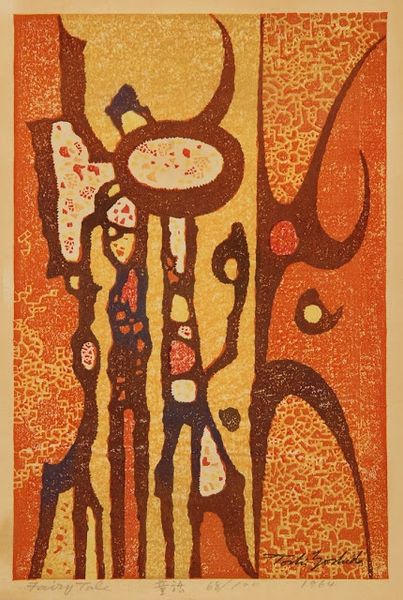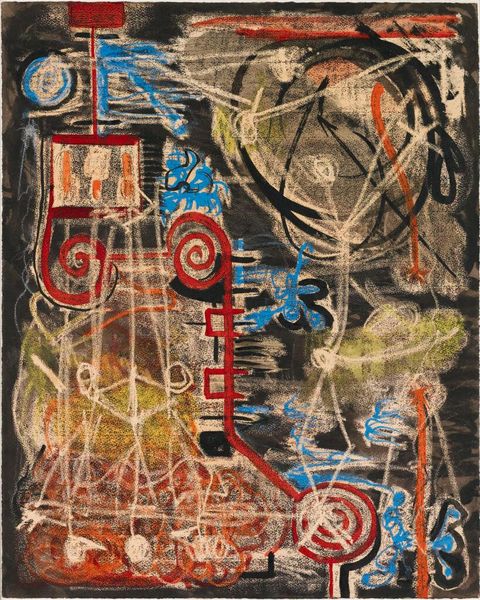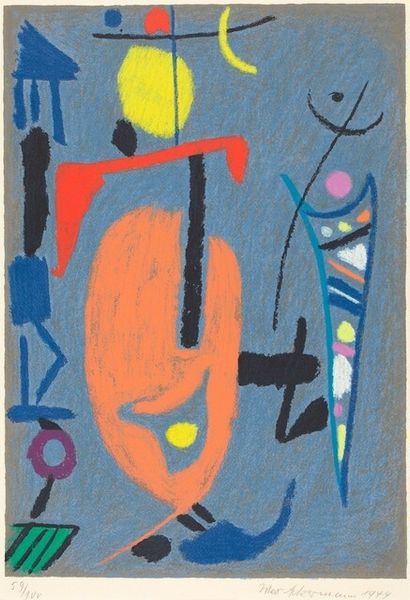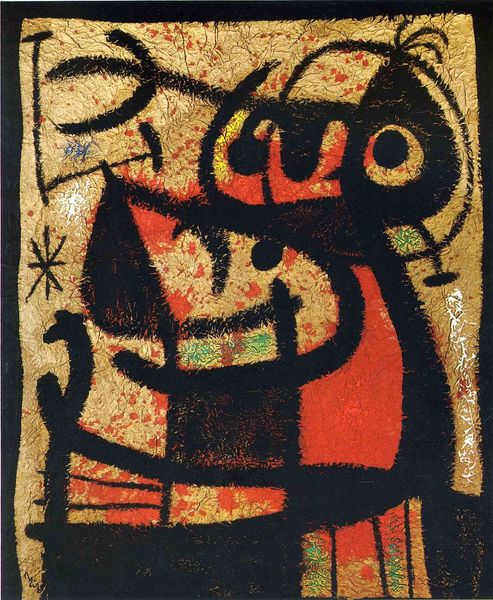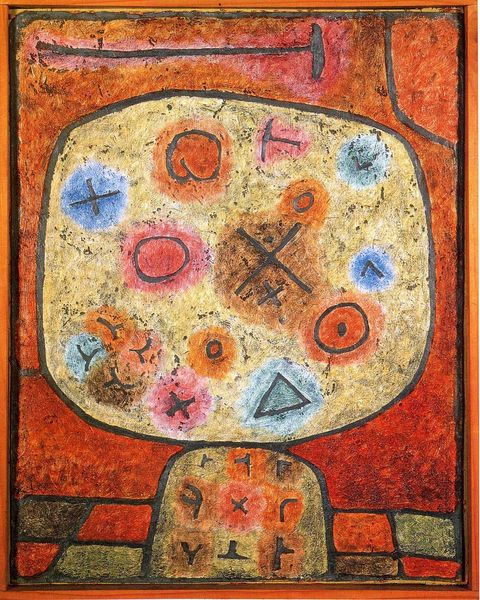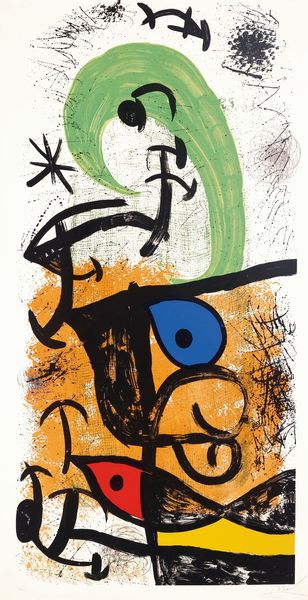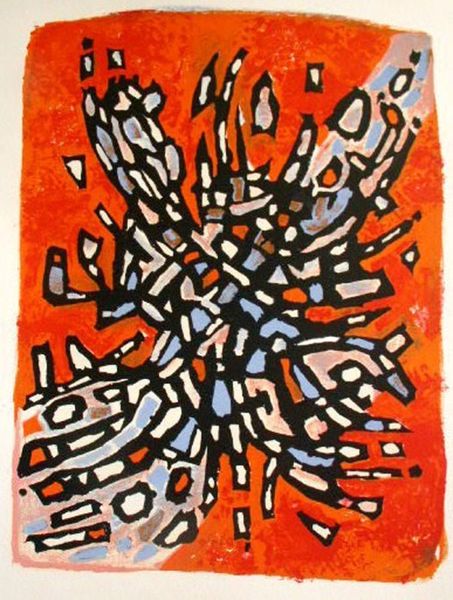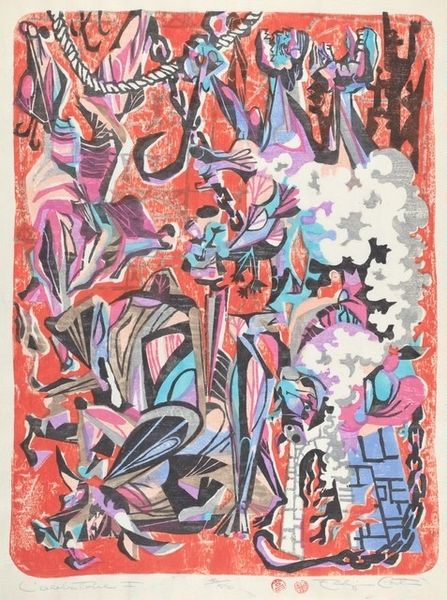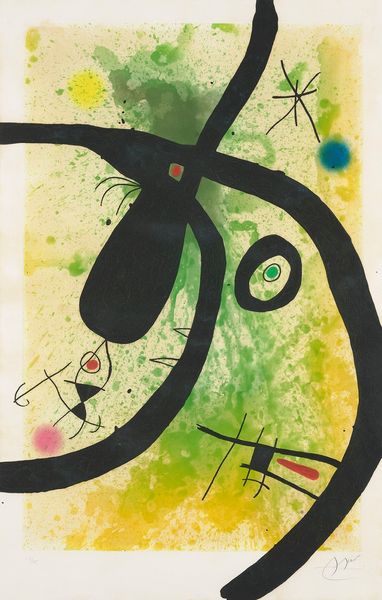
Dimensions: overall: 37.1 x 49.4 cm (14 5/8 x 19 7/16 in.)
Copyright: National Gallery of Art: CC0 1.0
Editor: So, this is Paul Klee's "Die Schale des Herzens," or "Chalice of the Heart," created in 1937. It’s a drawing, and at first glance, the geometric shapes and muted colors create a sort of whimsical, yet unsettling feeling. What do you see in this piece? Curator: Klee’s work, particularly from this period, demands we consider the sociopolitical context. It was created during the rise of fascism, and his art was declared "degenerate" by the Nazis. Given this, doesn't the chalice itself seem less like a vessel of love, and more like a distorted representation of a wounded or fractured society? Editor: That's a really interesting point. I hadn’t considered the political landscape. The 'chalice' definitely has a fragility to it. How does this reading impact your interpretation of the symbols within the heart shape? Curator: Think about it. The symbols within – are they expressions of love and growth, or are they signs of injury and oppression? Klee was deeply interested in the power of signs and symbols to convey complex emotional and political truths. Maybe, he uses this symbolism as an act of resistance. How do you read those individual components, now? Editor: Now that I'm looking at it that way, those clusters that looked like berries suddenly feel more like bruises. It's incredible how shifting the context can completely change the perceived mood. Curator: Exactly. The power of art lies not just in its aesthetic qualities, but in its ability to engage in a critical dialogue with its historical moment. The personal and the political are always intertwined. Editor: This piece is way more complicated than I initially thought! I'll definitely need to remember this intersectional approach moving forward. Curator: Indeed. Hopefully, this deeper engagement reveals new possibilities. The drawing asks us to consider whose voices and experiences are privileged or suppressed within broader historical narratives.
Comments
No comments
Be the first to comment and join the conversation on the ultimate creative platform.
